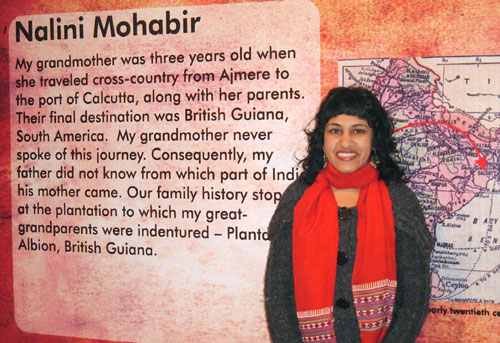
| On return home, no
happy endings for indentured labourers By Devirupa Mitra In a small Tamil Nadu village is India’s only living link to a certain colonial past.
New York-based filmmaker Shundell Prasad Once More
Removed: You
tube More Born in Guyana, 64-year-old C.G. Naresh was a passenger on the last ship that returned home to India with indentured labourers more than five decades ago.
The
story she unveils is anchored on a crucial clause included in all
contracts forced upon mostly illiterate peasants from Bihar and Uttar
Pradesh before being shipped to work in plantations across the seven
seas. Under the “right to return” clause, the colonial government
would pay for the passage home for the labourer at the end of his
indentureship. According
to Mohabir, who presented her research through photographs at a
diaspora festival organised by the Indira Gandhi National Centre for
Arts on the sidelines of the Pravasi Bharatiya Divas from January 8-9,
only one in four Indians who went to the colonies to work in
plantations returned home. But
the advent of Indian independence suddenly spurred the labourers, even
those who had lived there for over 60 years and had grandchildren, to
clamour to be returned back to the motherland, their visions tinted
with the glorious ideal of being part of a new Indian republic. “The
freedom movement and subsequent independence (of India) had fired the
imagination. There were protests in Trinidad and threats of mass
suicide in Jamaica over demands to return back home,” Mohabir told
IANS. Only
the government in British Guyana acquiesced and chartered a ship to
take back a thousand passengers. “But the Indian government pasted
posters around the city discouraging people to return,” she said. On
that September day 53 years ago, it seemed the entire country had come
to see off 243 passengers aboard M.V. Resurgent on Sproston’s No 1
Wharf in Georgetown. The next day’s paper summed it in a poignant
headline - “Going Home! To a home they never saw”. The
reference was to the fact that that the majority of the returnees were
going back with family, many of them having been born in the South
American colony and only knew of India from oral tales and newsreels. The
ship’s manifest lists the name and the home village, which was a
vital clue for Mohabir to trace the descendants. It
was through that method that she stumbled across the only passenger of
the ship that she could find alive - Naresh, who had travelled on
Resurgent as a 12-year-old along with 19 other family members. “His
father had sold off their entire business to return to India. But, as
soon as the ship docked at the port at Calcutta (after one month),
Naresh’s family realised that they had made a grave mistake,” said
Mohabir. Calcutta
was a strange city, already bursting at the seams with refugees from
East Pakistan and swirling with chaos due to the festival season.
Mohabir remembers that her grandfather, Chhablal Ramcharan, who
travelled with Resurgent’s passengers as the Guyanese repatriation
officer, telling her of the day after the arrival when he was besieged
at the hotel room with mob of 40 passengers. “They
were crying and pleading with him that they wanted to return back.
But, what could he do when the passage was only for one way,” she
said. Her
grandfather also told her that many of the passengers who couldn’t
remember their home villages were put up in a charity shelter called
The Refuge. That
organisation still stands at Bow Bazaar, from whose dusty ledgers she
was able to find another link to the ship. “I talked to some of the
old inmates who remembered a mother and daughter who were not from
Calcutta”. Cross checking the files of the old age home and the ship
manifest yielded two names - Manraji (in her 50s) and her daughter,
Biphia. “A
son, who had travelled with them, was not listed. Strangely, they
apparently never went to their village in Gorakhpur and stayed rest of
their lives at the Home. Manraji died sometime in the 1970s, while her
daughter was alive till the 1990s,” said Mohabir. She
found another missing link in Uttar Pradesh during her visit in the
summer of 2007 - in Amrora village in Azamgarh district was the
grandson of another passenger, Sant Sewak. “Interestingly, he did
return to his village but went back to Guyana. The grandson showed me
the letters and a will that they had preserved, complete with the
Guyanese postage stamp.” She
came across other stories of other returnees, who unable to cope with
an independent India that had changed drastically after 1947 wanted to
go back but could not afford the journey back to the colonies. “Their stories are not about India making them , January 20, 2008 |


